#bomber aircraft design
Explore tagged Tumblr posts
Link
The article "Convair B-36 Peacemaker" by Peter Suciu, published on "The Armory Life” on October 19, 2024, explores the significance of the B-36 Peacemaker, an imposing strategic bomber that played a vital role during the Cold War. Developed for long-range nuclear missions without refueling, it was the largest mass-produced piston-engined aircraft with a significant wingspan and length. Originally conceived to bomb Nazi Germany, its development pivoted towards counteracting the Soviet Union after World War II. Although seen as controversial due to concerns over its practicality in the modern military landscape and causing friction with naval aviation interests, it was a crucial asset in the Strategic Air Command (SAC), capable of carrying massive hydrogen bombs. Despite never being used in combat, the B-36 served as a deterrent to the USSR during its operational years, bridging the transition from propeller-driven bombers to the jet-powered age, until being replaced by the B-52 Stratofortress. Today, only four B-36 Peacemakers survive, including one at the National Museum of the United States Air Force, underlining its historical legacy as a deterrent rather than a combatant.
#Convair B-36 Peacemaker#Strategic Air Command#United States Air Force#Cold War#intercontinental bomber#nuclear deterrence#piston engines#jet engines#development program#airborne positions#aerial reconnaissance#7th Bomb Wing#509th Bomb Wing#Boeing B-52 Stratofortress#nuclear payload#bomber aircraft design#propulsion system#long-range strike capability#defense strategy.
1 note
·
View note
Text
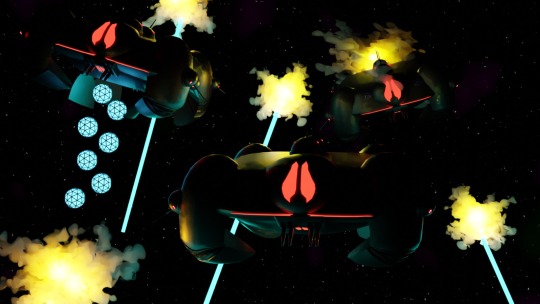
A separatist heavy bomber. After seeing the terrible resistance heavy bomber, I wanted to make one that made sense. So I came up with this design for a heavy bomber for the droid army!
#star wars#separatist#star wars fanart#star wars clone wars#the clone wars#sith#space#spaceship#heavy bomber#star wars bomber#bomber#star wars droids#star wars design#aircraft#מלחמת הכוכבים#concept art#art#blender#יצירה#artists on tumblr#artist#my art
1 note
·
View note
Text
Wildland Firefighters Deserve Fun Children's Museum Exhibits Too!

Why do the structure crews get to have all the fun, huh? Go to just about any children's museum and you're likely to find a little fire station or a fire truck, probably with some fun but flimsy costumes, maybe a fake fire hose to haul around or a toy axe. There's probably a mural on the wall of a cartoon burning building, complete with dalmatian. And kids love it! So many kids fall in love with the idea of being a firefighter at those exhibits.
But not once have I seen or heard of a similar exhibit for wildland firefighters. Possibly this is because most people don't realize that wildland firefighters and structure firefighters are not the same thing. Which is all the more reason to have an exhibit about it for kids, honestly! Let's start the learning young about what wildland fire is, how to stay safe from it, and what wildland firefighters do via an interactive, playful exhibit!
Since I work as a wildland fire dispatcher and study disasters, and I've designed museum exhibits before at other jobs, I figured this was an "I'll just do it myself" sort of scenario. And thus, my little wildland exhibit was born!

The idea behind this exhibit is to create a simple, semi self-directed play area for ages ~4-8 themed around a wildland fire scenario of protecting a small cabin from an approaching wildfire. It would have three main play areas: the Velcro Forest, The Cabin, and the Firetruck Climber, and there would be simple signage sharing facts about what wildland firefighters do and how they are different from structure firefighters.
The murals throughout the exhibit would be detailed, showing the diverse terrain wildland crews can work in, and also some of the support they get from aircraft like helicopters and slurry bombers.

Play Area 1: Firetruck Climber
The firetruck climber would be modeled after a Type 4 wildland engine, simplified into a kid friendly structure. It would have working lights that are non-flashing and low light for sensory safety, and the lights could be turned on and off from within the cab. Inside the cab is a dashboard with a toy radio, moving wheel, and two seats. Along the side of the truck is an interactive panel of pump controls, and a series of cubbies to store the play gear in the exhibit just like real wildland firefighters store their gear in their trucks.
The play gear would include costume yellow shirts, green pants, and boots just like what wildland firefighters wear, with an explainer that they wear very different gear than structural firefighters and don't use any portable breathing systems. Other gear would include toy Pulaskis (the wildland specific type of axe), toy hoes and rakes, and toy chainsaws.
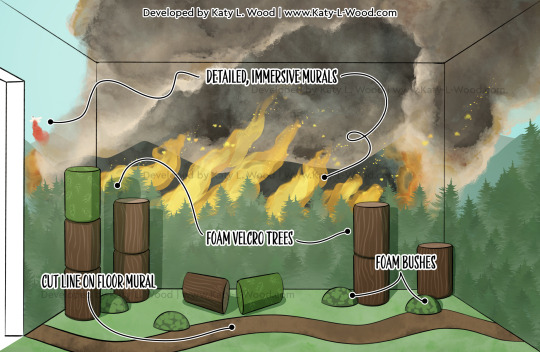
Play Area 2: The Velcro Forest
One of the main techniques for fighting a wildfire is removing the fuel it needs to burn, and that's what the velcro forest is all about. It is on the side of the exhibit closest to the fire (but the fire is not moving directly at it! You never work in front of a fire!). The trees are plastic covered foam blocks held together with velcro so they can easily be knocked down and then "cut" apart with the toy chainsaws. There are also moveable foam bushes on the ground.
The ground mural would include a strip of brown where anything on the forest floor had been scraped away to dirt, to represent the technique of cutting line.
Simple signage would explain the concept of removing fuel and cutting line to help stop the movement of dangerous fires.

Play Area 3: The Cabin
The third play area is the cabin you are trying to protect from the oncoming fire. This area would primarily be focused around the concept of defensible space and how a home can be protected by clearing away landscaping and removing burnable items from areas such as porches.
Gift Shop
To carry the learning outside the exhibit itself, I'd love to the gift shop carry things like children's books about wildfire (though there aren't a ton to choose from, sadly), toy wildland firetrucks, wildland fire kids costumes, things in that vein.
--
So yes! Wildland firefighter based children's exhibit! I think it would be great fun, and serve as a good way to introduce children (and their parents) to the knowledge that wildland firefighters are very different than structure firefighters. Will this sort of exhibit ever actually exist? Who knows! But I sure think it should.
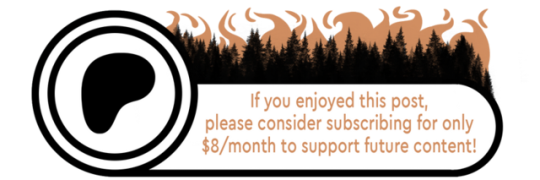
Subscribe on Patreon here.
#Wildland Fire#Wildfire#Forest Fire#Museum Exhibit#Children's Museum#Disaster Education#Exhibit Design#My Art
316 notes
·
View notes
Text








The Boeing XB-15 (Boeing 294) was a United States bomber aircraft designed in 1934 as a test for the United States Army Air Corps (USAAC) to see if it would be possible to build a heavy bomber with a 5,000 mi (8,000 km) range. The aircraft's immense size allowed flight engineers to enter the wing through a crawlway and make minor repairs in flight. A 5,000 mi (8,000 km) flight took 33 hours at its 152 mph (245 km/h) cruising speed; the crew was made up of several shifts, and bunks allowed them to sleep when off duty.
77 notes
·
View notes
Text

A Douglas B-18 “Bolo" bomber at Barksdale Field, Louisiana circa 1941. A mid-1930s design, the Bolo was approaching obsolescence by WW2 with better medium bombers just entering service. Original Kodachrome photo/slide. B-18s were deployed as transports and maritime patrol aircraft during the war though.
68 notes
·
View notes
Text
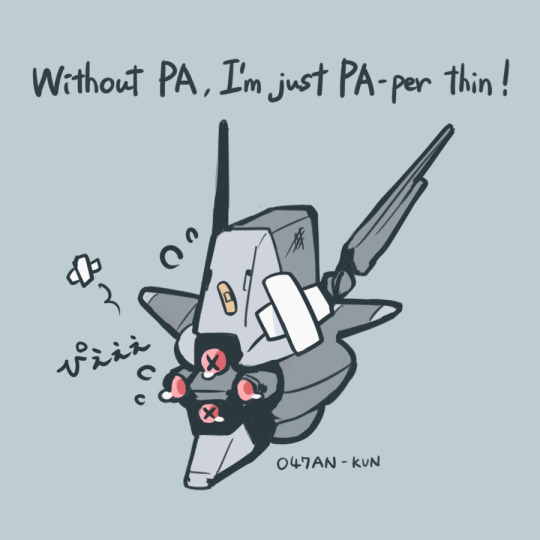
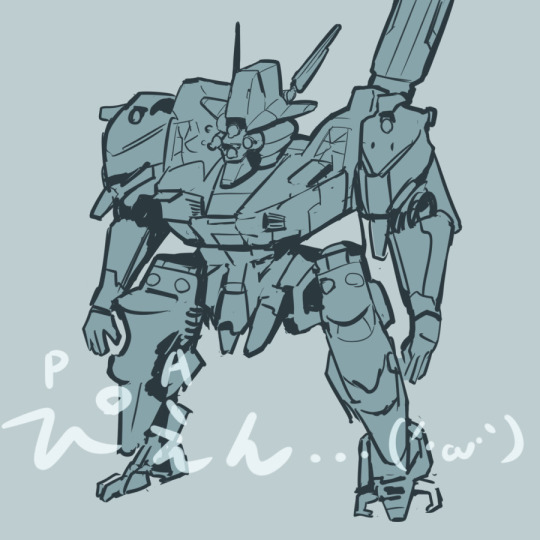
*Armored Core 4
047AN is apparently based on the concept of a stealth bomber, according to the design materials. When you isolate just the head, it really does give off that military aircraft vibe.
By the way, I noticed that NEXT ACs don’t actually have particularly thick armor, huh?
The second image is a full-body sketch I had to abandon midway due to time constraints. I like this level of stylization, but simplifying the details is surprisingly tricky.
88 notes
·
View notes
Text
COD Characters as Different Military Aircrafts
———
Soap -> A-10 Thunderbolt: Known for its loud and heavy gatling gun, outstanding close air support and its durability against damage. Its fierce and accurate air defense marks it as one of the best support aircrafts to exist.
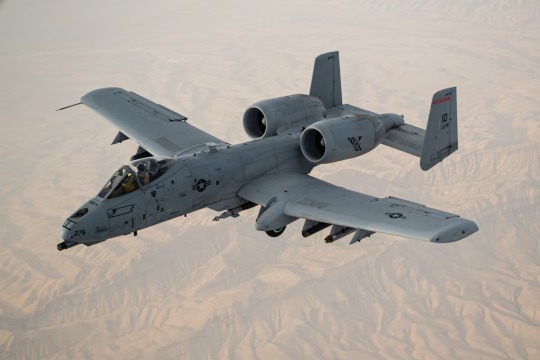
Ghost -> B-2 Spirit: Advanced stealth tactics and its ability to easily evade enemy detection to reign down its deadly force makes this bomber, a ghost in the sky.
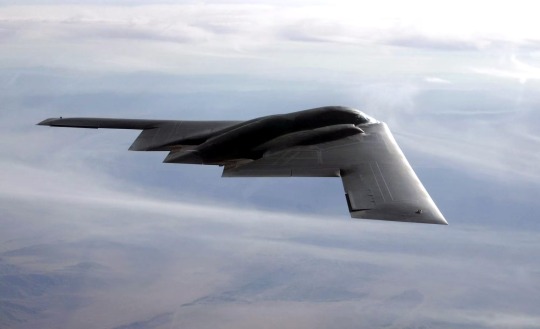
Roach -> F-14 Tomcat: Despite its air superiority and esteemed long range capabilities, the uncommon design of its “variable-sweep wings” marks it as the most distinctive and intriguing aspect of the aircraft.
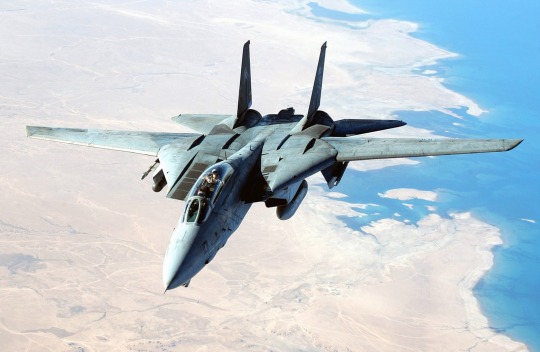
Gaz -> AH-64 Apache: Designed for high survivability and equipped with advanced technological targeting components makes it one of the best air support aircrafts in active service.

Price -> P-51 Mustang: An oldie but a goodie; was the star of the show in its prime with its outstanding range of speed, maneuverability, durability, and it’s skill to adapt quickly to different conditions.
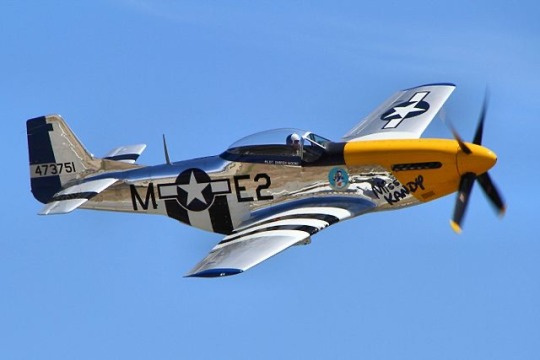
Laswell -> E-3 Sentry: Designated for surveillance, communications, and command; it’s your eyes in the sky.

Rudy -> KC-135 Stratotanker: You can always count on this aerial refueling tanker. When in need of support when you’re down, it’s got your back, always loyal to its allies.

Alejandro -> F-15 Eagle: Was built for extreme power, resilience, agility, and to display its aggressive dog-fighting capabilities proving it better than the feared oppositions. Never lost a fight protecting what it stood for.
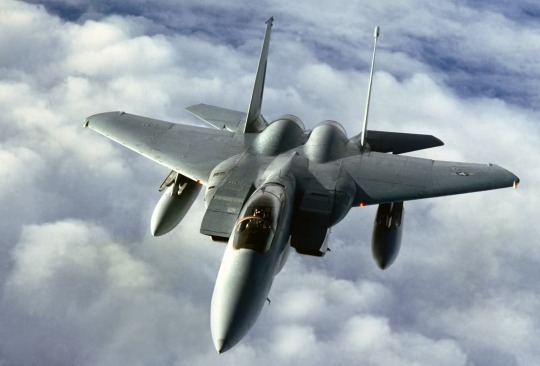
Valeria -> F-22 Raptor: This jet’s extreme capability to fly nearly completely invisible through radars makes it dangerous in its attacks. The state of the art technological advances allows it to fool anyone who comes across, creating a perfect chance to strike and claim victory.
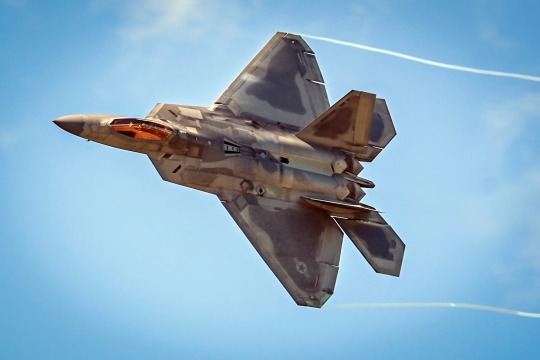
Graves -> V-22 Osprey: Although its dodgy components can wear the reliability of this aircraft thin, it’s service is still exceptional.

———
If you want a part 2, recommend some characters below for me to do next @_@
#john soap mactavish#simon ghost riley#gary roach sanderson#kyle gaz garrick#john price#kate laswell#rodolfo parra#alejandro vargas#valeria garza#phillip graves#mw2#cod mw2#call of duty#cod characters#modern warfare#og mw2#military#military aircraft#a 10 warthog#b 2 spirit#f 14 tomcat#p 51 mustang#e 3 sentry#kc 135 stratotanker#ah 64 apache#f 15 eagle#f 22 raptor#v 22 osprey#ghost cod#soap mactavish
62 notes
·
View notes
Text

Celebrating 60 Years of the XB-70 Valkyrie Mach 3 Super Bomber
September 16, 2024 Military Aviation
XB-70 60th anniversary
The lone XB-70 Valkyrie is photographed as it is moved to a new building at the Museum of the United States Air Force located at Wright-Patterson Air Force Base, Ohio, on Oct. 27, 2015. Beginning in the late 1950s and continuing through the mid-1960s, tests were conducted at Arnold Air Force Base, Tenn., headquarters of Arnold Engineering Development Complex, in support of the XB-70 program. The now-retired aircraft made its first flight on Sept. 21, 1964. (U.S. Air Force photo by Will Haas)
The experimental legacy of the iconic XB-70 Valkyrie, which made its first flight on Sept. 21, 1964.
An article published on the U.S. Air Force website commemorates the 60th anniversary of the first flight of the legendary XB-70 Valkyrie, a supersonic bomber that captured the imagination of aviation enthusiasts and engineers alike. Known for its sleek and futuristic design, the XB-70 remains a symbol of the experimental and ambitious spirit of Cold War-era aircraft development. Despite only two prototypes ever being built, the aircraft has left an indelible mark on military aviation history.
The XB-70 Valkyrie was originally conceived in the 1950s as a high-speed, high-altitude bomber for the U.S. Air Force Strategic Air Command. At a time when technological advancements were rapidly accelerating, the U.S. Air Force sought a bomber capable of flying faster and higher than the B-52 Stratofortress, its workhorse of the era (as well as the backbone of the strategic bomber fleet today and for some more decades in the future…).
With a planned cruise speed of Mach 3 and an operating altitude of 70,000 feet, the XB-70 promised to outpace and outmaneuver Soviet defenses, which were a growing concern during the Cold War.
One of the most remarkable features of the XB-70 was its ability to “ride” its own shockwave, a design innovation that allowed it to maintain stability and performance at supersonic speeds. The Valkyrie’s iconic delta wing, combined with six powerful jet engines, gave it an exotic and striking appearance, making it one of the most visually distinctive aircraft ever built. Its outer wing panels were hinged, allowing them to be lowered during flight to optimize the aerodynamic performance at high speeds.

The XB-70 looks like an alien spacecraft from this angle. (Image credit: USAF)
The article highlights the crucial role played by Arnold Engineering Development Complex (AEDC) in the development of the XB-70.
The testing of the Valkyrie’s engines, aerodynamics, and other key components began at Arnold Air Force Base in the late 1950s, well before the first prototype took shape. The AEDC’s facilities were instrumental in pushing the boundaries of what was possible in aviation at the time. One of the earliest tests involved the air-breathing engine nozzles proposed for the XB-70 in March 1958. This was followed by extensive wind tunnel testing of scale models of the Valkyrie, where the aerodynamic characteristics of bombs dropped from the aircraft were also studied.

A technician makes adjustments to a scale model of the XB-70 Valkyrie before aerodynamic characteristics related to the aircraft are evaluated in Tunnel A of the von Kármán Gas Dynamics Facility at Arnold Air Force Base, Tenn., headquarters of Arnold Engineering Development Complex, in 1959. Beginning in the late 1950s and continuing through the mid-1960s, tests were conducted at Arnold Air Force Base, Tenn., headquarters of Arnold Engineering Development Complex, in support of the XB-70 program. Only two Valkyries were built, with only one of the pair remaining. The now-retired aircraft made its first flight on Sept. 21, 1964. (U.S. Air Force photo)
Development continued into the early 1960s, with the YJ93 turbojet engines, designed specifically for the XB-70, undergoing rigorous testing at AEDC. These engines were critical to the Valkyrie’s ability to reach and maintain supersonic speeds. However, in 1961, before the first prototype was even completed, the bomber program was canceled due to budget constraints and concerns over the bomber’s vulnerability to Soviet surface-to-air missiles, which had rapidly advanced in capability.
Although the XB-70 bomber program was terminated, the Valkyrie found new life as a research aircraft.

Three drag chutes were needed to slow down the landing roll of the XB-70. (Image credit: Reddit edit The Aviationist)
The U.S. Air Force recognized the potential of the aircraft to serve in aerodynamics and propulsion research, particularly in the study of large supersonic aircraft. Consequently, two XB-70 prototypes were completed, and testing continued, including at AEDC, where a scale version of the XB-70 inlet, paired with a full-scale YJ93 engine, was tested in August 1962.
XB-70A number 1 (62-001) made its first flight from Palmdale to Edwards Air Force Base, CA, on Sept. 21, 1964. The second XB-70A (62-207) made its first flight on Jul. 17, 1965. The latter differed from the first prototype for being built with an added 5 degrees of dihedral on the wings as suggested by the NASA Ames Research Center, Moffett Field, CA, wind-tunnel studies.

North American XB-70A Valkyrie on the taxiway with a cherry picker. Photo taken Sept. 21, 1964, the day of the first flight. Note: the left main landing gear brakes locked during the landing causing two tires to blow. (U.S. Air Force photo)
While the 62-001 made only one flight above Mach 3, because of poor directional stability experienced past Mach 2.5, the second XB-70, achieved Mach 3 for the first time on Jan. 3, 1966 and successfully completed a total of nine Mach 3 flights by June on the same year.
However, the Valkyrie program suffered a devastating setback in June 1966 when the second prototype was destroyed in a midair collision with an F-104N Starfighter during a photoshoot. This tragic accident resulted in the loss of key personnel and diminished the future prospects of the Valkyrie.

North American XB-70A Valkyrie just after collision. Note the F-104 is at the forward edge of the fireball and most of both XB-70A vertical stabilizers are gone. (U.S. Air Force photo)
Despite this setback, the remaining XB-70 continued to serve as a valuable research platform. In 1967, the U.S. Air Force transferred the aircraft to NASA, where it was used in support of the National Supersonic Transport (SST) program. NASA employed the XB-70 to investigate supersonic flight operations, but the SST program was eventually canceled in 1971, marking the end of America’s efforts to develop a commercial supersonic airliner.
The XB-70 Valkyrie’s final flight took place on Feb. 4, 1969, when it was flown to Wright-Patterson Air Force Base in Ohio. There, the aircraft was placed on display at what is now the National Museum of the United States Air Force, where it remains a testament to the audacious engineering and design of its era.

A view of the six massive afterburners on the XB-70 Valkyrie as the aircraft is towed out of its display hangar temporarily for museum maintenance. (Photo: National Museum of the U.S. Air Force via YouTube)
Though only two XB-70s were ever built, their legacy endures: the aircraft’s pioneering advancements in aerodynamics, engine performance, and high-speed flight helped shape the future of supersonic aviation.

Pilots who were to perform the first test flights for the XB-70 Valkyrie operate the YJ93 engine, the powerplant of the XB-70, while the engine is tested under simulated flight conditions in May 1964 in the Rocket Test Facility at Arnold Air Force Base, Tenn., headquarters of Arnold Engineering Development Complex. This was done to help the pilots familiarize themselves with the performance characteristics of the engine prior to the first XB-70 flight, which occurred on Sept. 21, 1964. Beginning in the late 1950s and continuing through the mid-1960s, tests were conducted at Arnold AFB in support of the XB-70 program. Only two Valkyries were built, with only one of the pair remaining. (U.S. Air Force photo)
The first prototype made a total of 83 flights, amassing 160 hours and 16 minutes of flight time, while the second prototype completed 46 flights, totaling 92 hours and 22 minutes.
The XB-70 Valkyrie, with its daring design and groundbreaking capabilities, continues to captivate aviation enthusiasts and engineers. Its story, though short-lived in terms of operational use, highlights the relentless pursuit of innovation that defines the U.S. Air Force and its engineering partners. Sixty years after its first flight, the Valkyrie remains an iconic symbol of the bold ambitions of Cold War-era aviation.

XB-70 Night Take-off. (Photo via Air Force Materiel Command History Office)
About David Cenciotti
David Cenciotti is a journalist based in Rome, Italy. He is the Founder and Editor of “The Aviationist”, one of the world’s most famous and read military aviation blogs. Since 1996, he has written for major worldwide magazines, including Air Forces Monthly, Combat Aircraft, and many others, covering aviation, defense, war, industry, intelligence, crime and cyberwar. He has reported from the U.S., Europe, Australia and Syria, and flown several combat planes with different air forces. He is a former 2nd Lt. of the Italian Air Force, a private pilot and a graduate in Computer Engineering. He has written five books and contributed to many more ones.
@TheAviationist.com
118 notes
·
View notes
Photo

Boeing B-29 Superfortress
The Boeing B-29 Superfortress was a four-engined, long-range bomber of the United States Air Force. The largest of all Second World War (1939-45) bombers, B-29s were used to strike Japanese targets from the summer of 1944. In August 1945, the B-29s 'Enola Gay' and 'Bockscar' each dropped an atomic bomb on Hiroshima and Nagasaki, respectively, thereby ending the war.
Development
In the 1930s, the United States Army Air Corps (USAAC) required a long-range strategic bomber that could attack enemy targets thousands of miles from the aircraft's home base. One of the problems to make such an aircraft a reality was to find engines which were powerful enough for the task. The project to design and build a long-range, high-altitude precision bomber, or VLR (Very Long Range) as such aircraft became known, was greatly accelerated following the invasion of Poland in 1939 by Nazi Germany and the outbreak of WWII. In January 1940, five aircraft companies were tasked with designing a VLR bomber. Four companies came back with a design proposal: Consolidated, Douglas, Lockhead, and Boeing. After two of the companies later withdrew, only Consolidated and Boeing won construction contracts in September 1940. Ultimately, each company built three prototypes. Boeing's construction plans were more advanced since it had already been working on modifications of its existing Boeing B-17 Flying Fortress design. Boeing received an order of 1,500 VLRs and promised these aircraft would be ready within three years.
Following the Japanese attack on Pearl Harbour in Hawaii, home of the US Pacific naval fleet, on 7 December 1941, the need for VLRs in the vast theatre of the Pacific Ocean suddenly became a necessity. The first Boing VLR prototype, called XB-29, flew on 21 September 1942. The very large wings of the craft were designed to help it land at lower speeds, and tricycle landing gears helped bear the tremendous weight. 14 test aircraft began to fly from June 1943. The planes were built at four principal plants: Renton, Wichita, Marietta, and Omaha. Boeing, Bell, and Martin were just three of the main companies involved, but there were thousands of others providing components and partial assembly. The B-29 project "was the largest aircraft manufacturing project undertaken in the USA during World War II" (Mondey, 29). It was also the most expensive. From the autumn of 1943, the first B-29 bombers were delivered to US air bases.
B-29 Superfortress in Flight
US Air Force (Public Domain)
Continue reading...
48 notes
·
View notes
Text

The “wrinkles” in the skin of the B‑52 Stratofortress: An aeronautical engineering secret
The notorious “wrinkles” in the skin of the iconic B‑52 Stratofortress bomber are not a flaw, but a direct consequence of its ingenious structural design and the stresses experienced during high‑speed flight. These “speed wrinkles” appear when the lightweight, flexible aluminum fuselage expands and contracts under aerodynamic forces and temperature fluctuations.
During subsonic flights, the aircraft is subjected to intense aerodynamic pressure that produces these wrinkles—especially around seams, access panels, and structural joints. At first glance they may seem concerning, but they are actually an expected phenomenon and do not affect the safety or performance of the airplane.
Interestingly, these wrinkles can even help improve aerodynamic efficiency by reducing drag and optimizing airflow over the fuselage. What might look like a defect is, in fact, a testament to the innovative design that has kept the B‑52 flying for over six decades.
42 notes
·
View notes
Text

How many bombs can the F-111 aardvark carry?
The F-111 Aardvark is actually a supersonic medium-range interdictor and tactical bomber aircraft, not a bomb-carrying device. It's a plane designed to carry out various missions, including ground attack, bombing, and reconnaissance.
The F-111 Aardvark can carry a significant payload, but the exact number of bombs it can carry depends on the specific configuration and the type of bombs being used. Here are some general details:
The F-111A/B models can carry up to 18,000 pounds (8,165 kg) of ordinance, including bombs, rockets, and missiles.
The F-111F model can carry up to 24,000 pounds (10,886 kg) of ordinance.
The F-111G model can carry up to 27,000 pounds (12,247 kg) of ordinance.
The F-111 Aardvark can carry a variety of bombs, including Mk 84, Mk 82, and Mk 83 series bombs, as well as other types of ordnance. However, the specific bomb loadout would depend on the mission requirements and the configuration of the aircraft.
116 notes
·
View notes
Link
The article by Peter Suciu on "The Armory Life" discusses the McDonnell XF-85 Goblin, a prototype "parasite" fighter jet developed during the Cold War by the U.S. Air Force. Intended to provide protection for bombers beyond the range of conventional escorts, it was designed to deploy from bombers mid-flight, such as the Convair B-36 Peacemaker and initially tested with a Boeing B-29 Superfortress. The Goblin's design included innovative features like foldable wings and a trapeze deployment system, but the project faced critical challenges, including difficulty in recovery due to turbulent air and limited flight endurance. Only two prototypes were built before the program was canceled, and the article explores the project's historical context, its technological ambitions, and subsequent efforts in developing parasite fighters, emphasizing the rapid advancement of Soviet fighter technologies and the transition to more promising aerial refueling techniques. The article also reflects on the legacy of the XF-85 Goblin and the potential future of unmanned collaborative combat aircraft concepts.
#McDonnell XF-85 Goblin#parasite fighter#B-36 bomber#Convair B-36 Peacemaker#McDonnell Aircraft Corporation#Frank Everest#Bell X-1#ejection seat#air defense#Cold War#U.S. Air Force#1948#aerodynamic design#retractable fuselage#wingtip tanks#flight testing#XF-85 prototype#rocket engine#airspeed#performance#manned interception.
0 notes
Text
Normandy trip : day 2, part 2!!
The Caen Memorial Museum
the exhibition ends on VE day, with various newspapers and pictures displayed


a second exhibition is dedicated entirely to the landing in Normandy, and explores the different techniques and consequences of the overlord operation!


finally, a small portion of the memorial is dedicated to the Cold War, and explains pretty much all of the aspects of it, from the Vietnam War to the building of the wall between west and east Berlin. It also compares the USA way of living vs the USSR kind of life.
A fake cinema entrance was build too !


In the Museum, two planes are displayed, one in the hall and one in the cold War section. I truly adore planes so there you go:


on the left is a Mig-21 (it's a supersonic jet fighter and interceptor aircraft designed by the soviet union) and on the right is an Hawker Typhoon (a British single-seat fighter-bomber)
The Memorial also houses a bunker (!!) which used to be the headquarters of the German General Wilhelm Richer, who was in charge of defending the Calvados beaches in 1944. The bunker is renovated, but pictures show the state it was found in, and different sounds like typewriters and bombing play to put visitors in the "mood"
All around the museum, you can visit three memorial gardens, dedicated to the Canadian, British and American troops. Here is the American one, which is the most impressive of the three :

If you ever get the chance to go to Caen, I HIGHLY recommend the Memorial. It's such a beautiful place, which displays in a thoughtful and creative way the history of World War II. It also houses a nice exhibition on the Holocaust, done is a very respectful and impactful way. It's a great museum, that takes tremendous effort to show all sides of war, including the horrors of it. I can't lie, I shed a tear or two.
Finally, here's what I gathered today !!

the biggest book is about uniforms, weapons and equipments from wwii soldiers, on all fronts of the war !! and the smallest one is a replica of the small guides that were given to American soldiers coming in France, with various advice, vocabulary and how to pronounce it, a survey of French history.
thank you for supporting my spam, in hopes you'll enjoy some of it !!
28 notes
·
View notes
Text













The Curtiss BF2C Goshawk-2 served the U.S. Navy from 1934-1938. Up to this time, the Navy had been repurposing existing fighter aircraft in the dive bomber role. The Goshawk was the first aircraft designated as 'BF' for bomber/fighter from the factory. It had fabric-covered metal construction with metal-covered control surfaces. The Navy "high hat" squadron retained BFC's until February, 1938. Though the Goshawk did not see combat with the U.S. Navy, the Chinese Nationalist Air Force received 52 F11Cs as Hawk IIs and fought against the Japanese during the Second Sino-Japanese War.
67 notes
·
View notes
Text




Myasishchev M-4 Bison strategic bomber. The aircraft fell well short of its intended range and was not fully capable of attacking the most valuable targets in the United States. As this became clear, production was shut down.
In spite of the failure to produce a capable strategic design and the resulting small numbers, the M-4 nevertheless sparked fears of a "bomber gap" when 18 of the aircraft were flown in a public demonstration on May Day in 1954. The US responded by building thousands of Boeing B-47s and B-52s to counter this perceived threat.
24 notes
·
View notes
Text

English Electric Lightning
The English Electric Lightning is a British fighter aircraft that served as an interceptor during the 1960s, the 1970s and into the late 1980s. It is capable of a top speed above Mach 2. The Lightning was designed, developed, and manufactured by English Electric. After EE merged with other aircraft manufacturers to form the British Aircraft Corporation it was marketed as the BAC Lightning. It was operated by the Royal Air Force (RAF), the Kuwait Air Force (KAF), and the Royal Saudi Air Force (RSAF).
A unique feature of the Lightning's design is the vertical, staggered configuration of its two Rolls-Royce Avon turbojet engines within the fuselage. The Lightning was designed and developed as an interceptor to defend the airfields of the British "V bomber" strategic nuclear force from attack by anticipated future nuclear-armed supersonic Soviet bombers such as what emerged as the Tupolev Tu-22 "Blinder", but it was subsequently also required to intercept other bomber aircraft such as the Tupolev Tu-16 ("Badger") and the Tupolev Tu-95 ("Bear").
The Lightning has exceptional rate of climb, ceiling, and speed; pilots have described flying it as "being saddled to a skyrocket". This performance and the initially limited fuel supply meant that its missions are dictated to a high degree by its limited range. Later developments provided greater range and speed along with aerial reconnaissance and ground-attack capability. Overwing fuel tank fittings were installed in the F6 variant and gave an extended range, but limited maximum speed to a reported 1,000 miles per hour (1,600 km/h).
34 notes
·
View notes